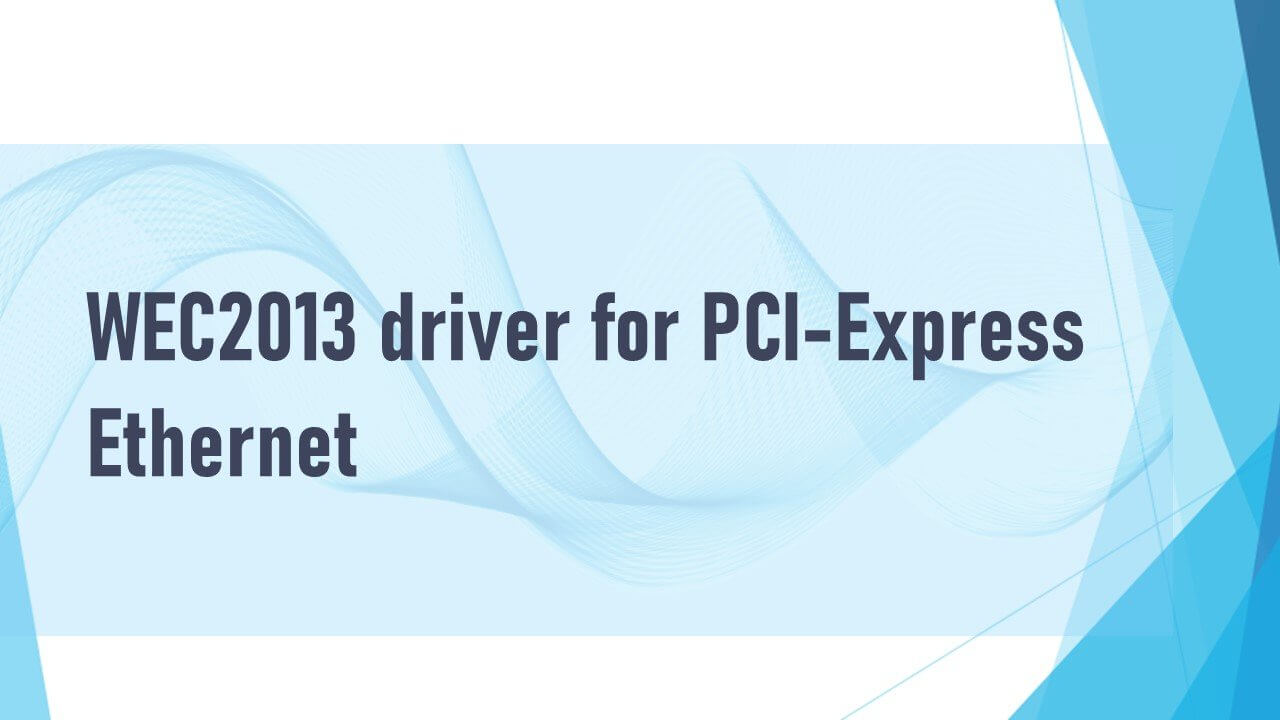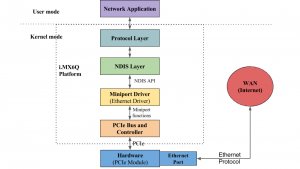WEC2013 (Windows Embedded Compact 2013) driver for PCIe Ethernet
iWave has developed a WEC2013 (Windows Embedded Compact 2013) Ethernet driver through PCIe (Peripheral Component Interconnect Express) interface on i.MX 6Quad platform. This driver supports for all processor architectures. Ethernet standard IEEE 802.3 is followed.
Overview on PCIe Bandwidth :
PCIe is a serial expansion bus standard for connecting a processor to one or more peripheral devices. Currently PCIe 3.0 allows for 8Gbps per lane. So 16 lane PCIe can ideally provide 128Gbps.
WEC13 PCIe Ethernet driver Architecture :
WEC13 PCIe Ethernet driver consists of PCIe Controller Driver, PCIe Bus Driver and Ethernet(miniport) driver.
Device Manager loads the PCIe Bus driver, PCIe Bus Driver do the bus enumeration and finds the devices on the bus. By reading the Vendor ID and Device ID of the Giga bit Ethernet module(GbE) loads the Ethernet(miniport) driver. Miniport Driver uses the NDIS Library API’s for packet transmission as shown in below fig (2)
As seen in the above fig(2) the board is connected through PCIe interface to GbE module. Whenever data comes to the module interrupt generated and NDIS API called which in turn calls the miniport Handlers to handle the interrupt. We have used Intel’s 82574L GbE module, since PCIe is platform independent miniport driver can be used across any platforms.
iWave has expertise on WEC7 and WEC2013 board support package development, including, support for RS232 Serial Console port, SDHC, USB 2.0 Host, USB2.0 device, Ethernet, 7” TFT LCD, Touch Screen support, SATA HDD port, HDMI port on NXP i.MX6 processors and also through PCIe interface many drivers has been developed like bluetooth, WIFI, Ethernet. WEC13 PCIe Ethernet driver can be ported to chip set from any vendor. Currently we have on Intel 82574L module.
Advantages of PCIe Ethernet:
- Higher maximum bandwidth
- Platform Independent
- Less power consumption
- Lower I/O pin count
- Better performance-scaling
- More detailed error detection and reporting
Applications:
- We developed WEC13 Ethernet driver for Intel 82574L GbE module with this expertise we can develop miniport driver to chip set from any vendor.
- The GbE module as secondary Ethernet will be an add on feature.
- Both normal Ethernet and PCIe card can be used simultaneously one of them can be used for debugging purpose.
- Since packet transmission is faster in Ethernet through PCIe, it can be used in time critical systems.
- By making use of PCIe switch many end point PCIe can be connected.
For further information or enquiries please write to mktg@iwavesystems.com or contact our Regional Partners.
-Skandaprasad
Member Technical-Software
iWave Systems Technologies Pvt. Ltd.




